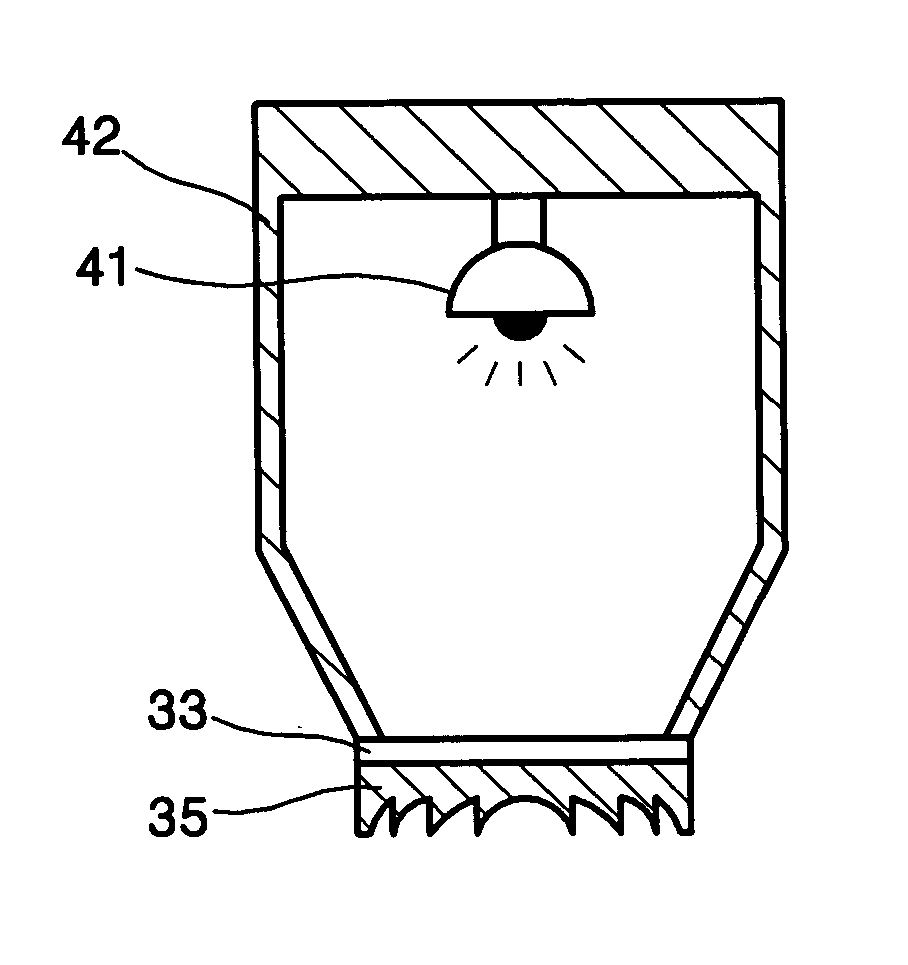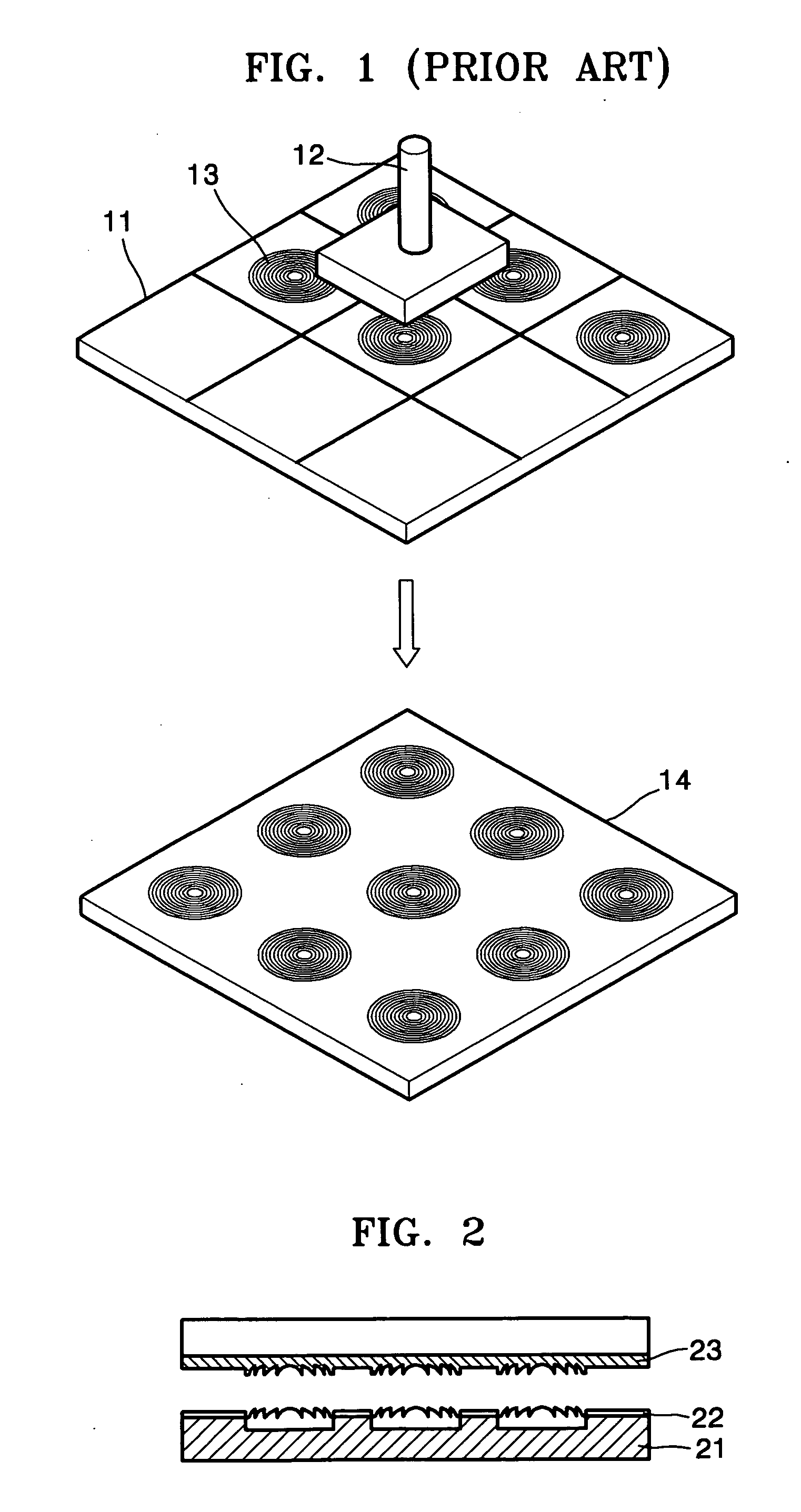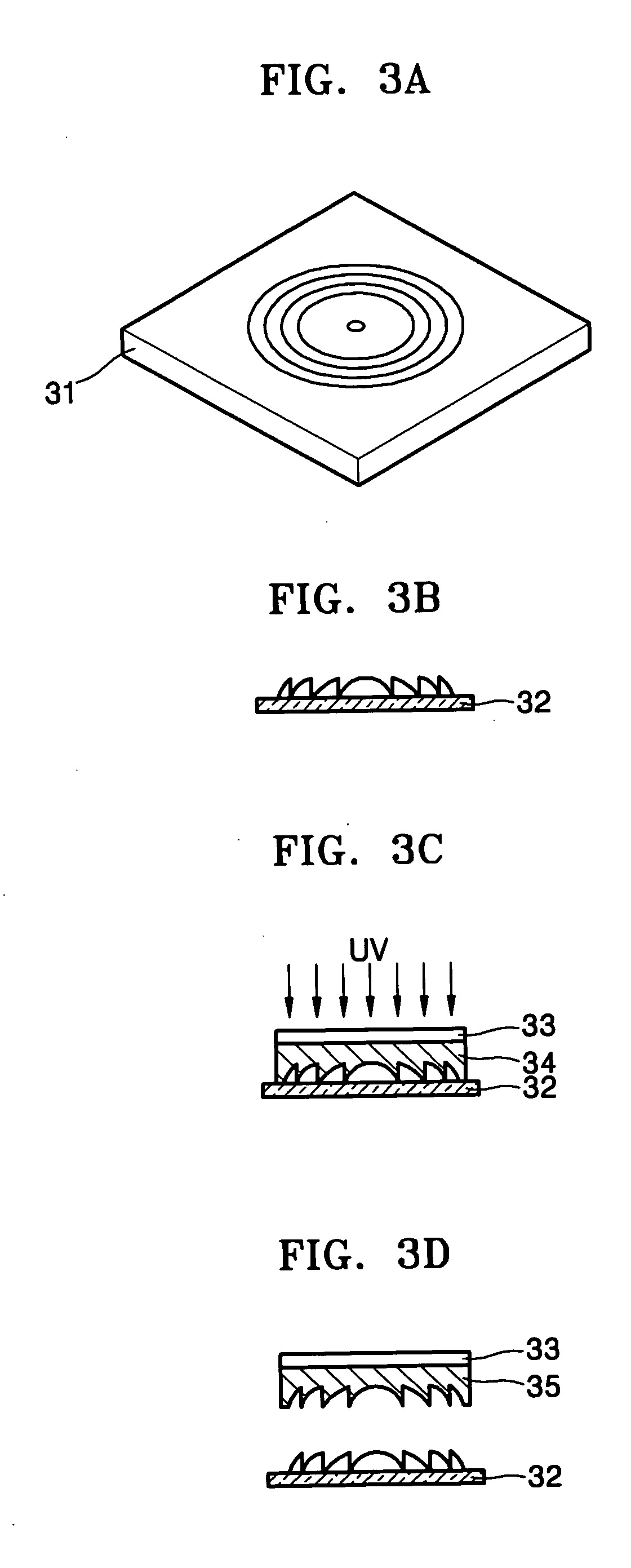Method of fabricating diffractive lens array and UV dispenser used therein
a technology of diffractive lenses and molds, applied in the field of fabricating diffractive lens array molds and ultraviolet (uv) dispensers, can solve the problems of geometric error, inability to fabricate doe arrays with patterned microstructures, and less accuracy in fabricating, and achieve excellent productivity and eliminate alignment errors
- Summary
- Abstract
- Description
- Claims
- Application Information
AI Technical Summary
Benefits of technology
Problems solved by technology
Method used
Image
Examples
Embodiment Construction
[0025] The present invention is now described in further detail by reference to the drawings. However, the present invention should not be construed as being limited thereto.
[0026] Referring to FIG. 2, a diffractive lens array 22 is fabricated by an ultraviolet (UV) embossing process. More specifically, a diffractive lens array mold 23 is pressed onto a glass substrate 21 on which a polymer has been coated. Then, the polymer is cured by UV radiation. The polymer is fully cured when heated to a predetermined temperature, thereby fabricating the diffractive lens array 22. A solution containing (Si, Ti)O2 precursors may be used instead of the polymer and has characteristics similar to a glass material when cured by UV radiation. Since refractive index varies depending on the precursor, the use of the solution can improve optical performance. Forming a desired diffractive lens array and an inverted mold structure is essential to fabrication of the diffractive lens array 22.
[0027] A pr...
PUM
 Login to View More
Login to View More Abstract
Description
Claims
Application Information
 Login to View More
Login to View More - R&D
- Intellectual Property
- Life Sciences
- Materials
- Tech Scout
- Unparalleled Data Quality
- Higher Quality Content
- 60% Fewer Hallucinations
Browse by: Latest US Patents, China's latest patents, Technical Efficacy Thesaurus, Application Domain, Technology Topic, Popular Technical Reports.
© 2025 PatSnap. All rights reserved.Legal|Privacy policy|Modern Slavery Act Transparency Statement|Sitemap|About US| Contact US: help@patsnap.com



